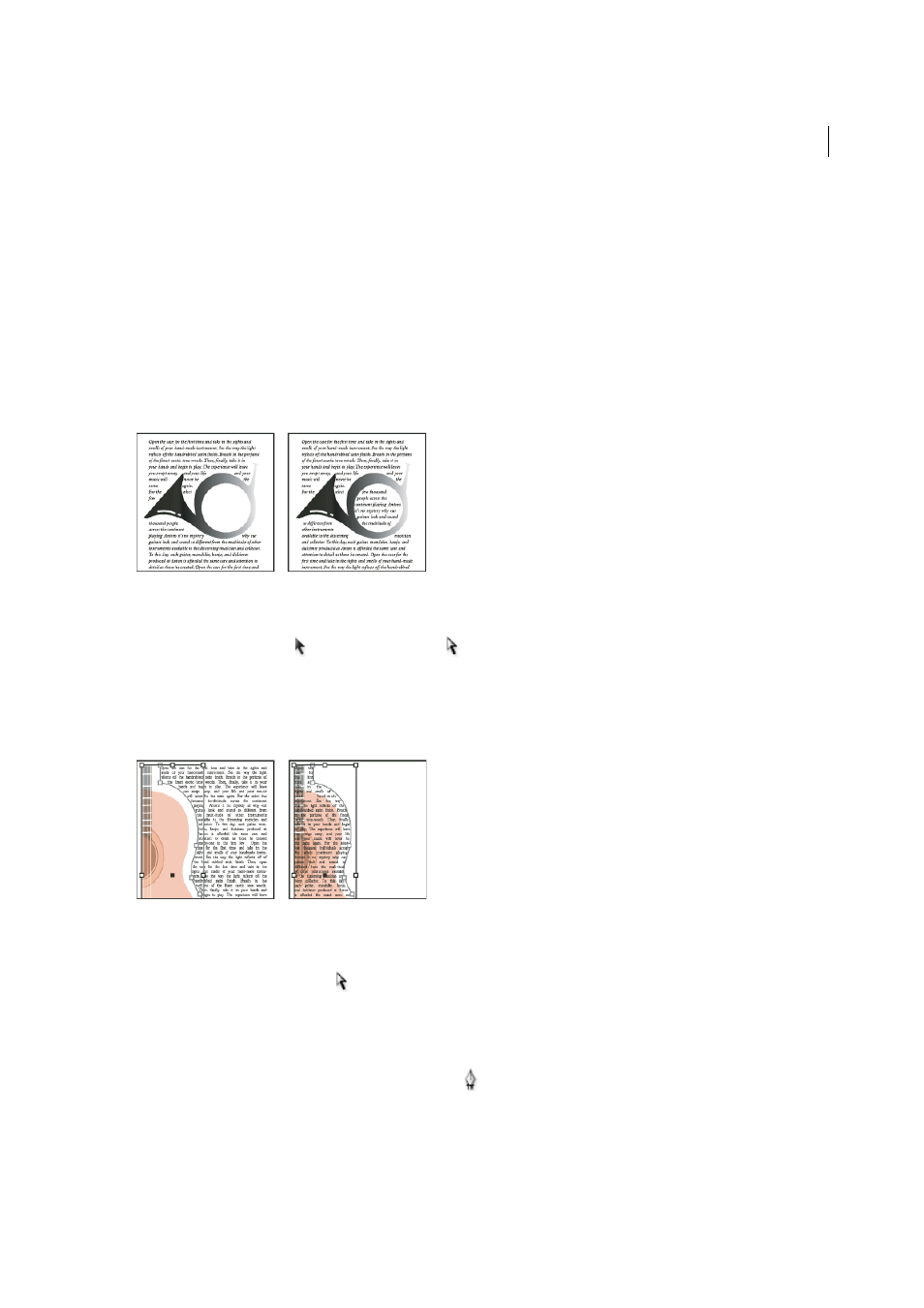Create an inverted text wrap, Change the shape of a text wrap – Adobe InDesign CC 2015 User Manual
Page 198

193
Text
Last updated 6/6/2015
Bounding Box
Wraps text to the rectangle formed by the image’s height and width.Detect EdgesGenerates the
boundary using automatic edge detection. (To adjust edge detection, select the object and choose Object > Clipping
Path > Options.)Alpha ChannelGenerates the boundary from an alpha channel saved with the image. If this option
isn’t available, no alpha channels were saved with the image. InDesign recognizes the default transparency in Adobe
Photoshop (the checkerboard pattern) as an alpha channel; you must otherwise use Photoshop to delete the
background or create and save one or more alpha channels with the image.Photoshop PathGenerates the boundary
from a path saved with the image. Choose Photoshop Path, and then choose a path from the Path menu. If the
Photoshop Path option isn’t available, no named paths were saved with the image.Graphic FrameGenerates the
boundary from the container frame.Same As ClippingGenerates the boundary from the imported image’s clipping
path.
6
To let text appear inside “holes” of an image, such as the inside of a tire image, select Include Inside Edges.
Create an inverted text wrap
1
Using the Selection tool or Direct Selection tool
, select an object, such as a compound path, that will allow text
to wrap inside it.
2
To display the Text Wrap panel, choose Window > Text Wrap.
3
Apply a text wrap to an object, and select the Invert option. Invert is commonly used with the Object Shape text
wrap.
Change the shape of a text wrap
1
Using the Direct Selection tool
, select an object that has a text wrap applied to it. If the text wrap boundary is the
same shape as the object, the boundary is superimposed on the object.
2
Do any of the following:
• To uniformly change the distance between the text and wrap object, specify offset values in the Text Wrap panel.
• To edit the text wrap boundary, use the Pen tool
and Direct Selection tool.
